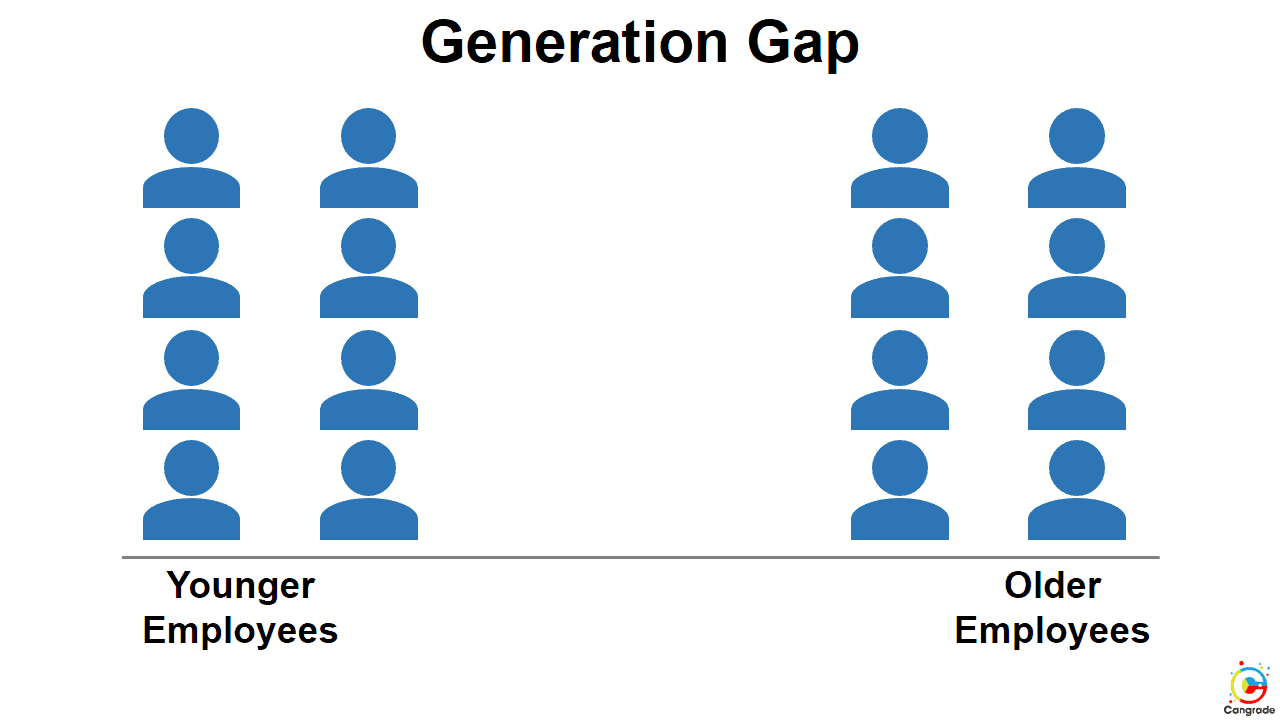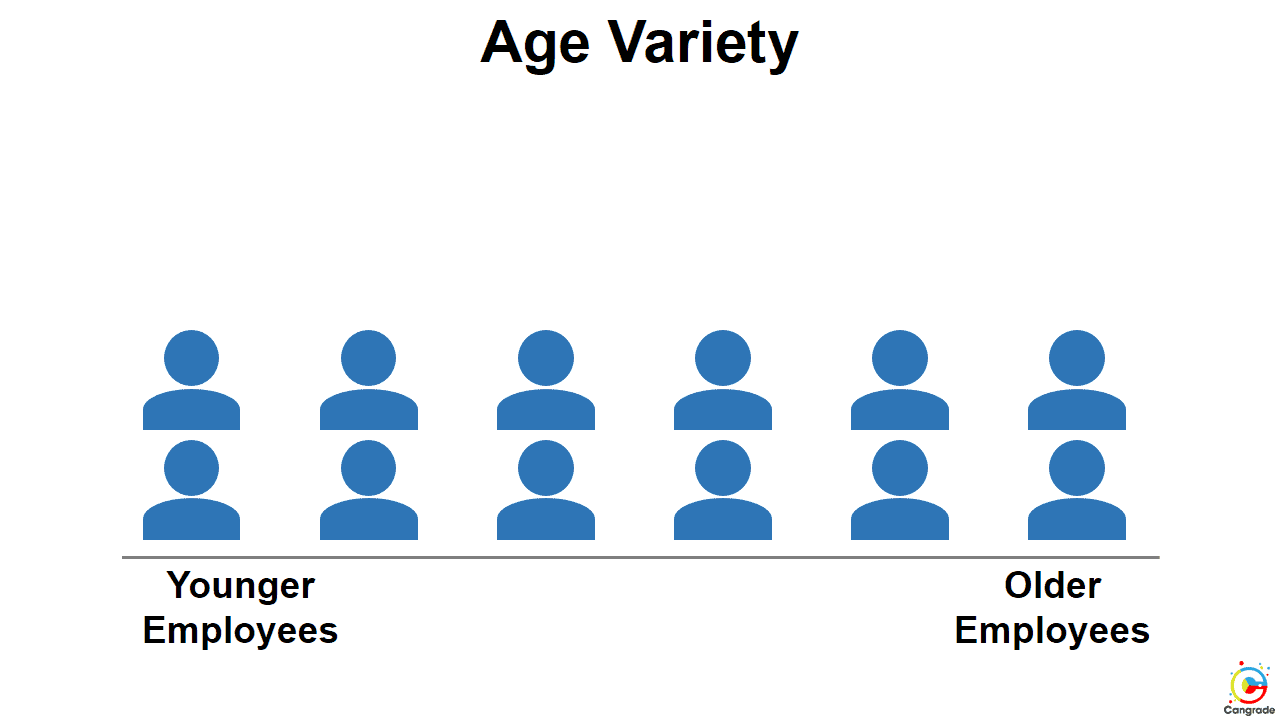How to Bridge the “Generation Gap” at Work
What happens as the next generation enters the workforce?
It could be a good thing. Younger workers can bring fresh perspectives, new ideas, and complementary skillsets.
Or it could be bad. Older and younger workers can have very different values and work styles, which can create conflict or undermine cooperation.
Both can happen, so the question isn’t which one is true.
The real question is why.
New research provides us with an important answer.
What is a “Generation Gap?”
The great insight from this new research is how we define it in the first place.
Let’s visualize. Imagine an organization that has 2 relatively distinct age groups.

If you consider the possible range of employee ages, you can actually see a gap in the middle. Statistically.
Organizations with employees that are clustered into age groups (like in the visual above) are also much less productive.
The effects are especially negative in larger organizations.
Age Variety
These age gaps aren’t inevitable.
Imagine an organization that has a range of employees across age.

People can fill the gap.
Organizations with more age variety (like in the second visual) are also much more productive.
The effects are especially positive in larger organizations.
How to bridge the “Generation Gap”
Résumé screening often creates the problem.
Education, years of experience, work history. Each reveals a person’s age.
Some organizations shy away from hiring people in the middle because they seem “overqualified” for lower-level positions.
Some organizations shy away from hiring people in the middle because modest amounts of experience make them seem less qualified for higher-level positions.
But if these people can fill in the generation gap and thus improve the organization’s productivity, both policies are worth seriously reconsidering.
It’s also important to realize that education, years of experience, and work history aren’t necessarily all that valuable.
For some jobs, they are a genuine requirement.
But for many jobs, they just seem “nice to have.” They might not actually make a big difference.
Fortunately, it’s possible to replace résumé screening, or at least save it for later in the process.
Using data-driven assessments as the first step in the hiring process can effectively expand your hiring options by generating more accurate predictions.